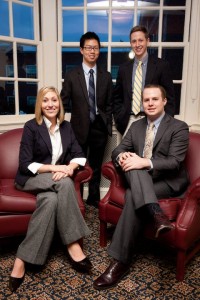By Olivia Seecof
Writer
On Monday nights, volunteers from the University and the local community come together as a group called Community Harvest to serve a nutritious meal to Milton community members.
Every week around 2:00 p.m., students set up tables and chairs, make the meal and put out the desserts, transforming the gym of St. Andrew’s United Methodist Church into a massive dining hall for a dinner to be served at 5 p.m.
“My favorite thing about Community Harvest is that I get to leave the ‘Bucknell Bubble,’ and I realize the hardships that America really is facing with hunger, poverty, etc,” student coordinator Carly Chafey ’13 said. “These problems are happening right near us at school, and many students have no idea.”
With the recent downturn in the economy, more Americans struggle with hunger and lack of food. According to the United States Department of Agriculture, one out of eight Americans struggles with hunger each year. Community Harvest is an opportunity to help those in need.
This problem not only affects urban areas but also rural and suburban populations like those surrounding the University.
“I love all the people I get to meet through this experience. I have gotten to know all of the patrons and they are so friendly, and it’s fun meeting a new group of Bucknell students each week,” Chafey said.
The organization serves approximately 200 individuals every week, and all people are welcome to attend, regardless of age, income or religious affiliation.
“They [the people who receive the meals] are all different ages and each one appreciates the meal that is served,” Sam Lara ’13 said.
The average weekly cost of a meal to feed all patrons at Community Harvest is about $300, which breaks down to about $2 per person.
Support for Community Harvest comes from the University, Parkhurst Dining Services, St. Andrew’s United Methodist Church, Weis Markets in Lewisburg and private donations.
There are three main ways to get involved with Community Harvest. One is to volunteer for the organization.
“[Community Harvest] is a great way for students to interact with local people in the community, and they love to tell stories of their lives and more,” Lara said.
A second way to get involved is through cooking. Cooking over 200 meals can be a large undertaking, so at Community Harvest there are never too many cooks in the kitchen.
The organization is also accepting any donations and is happy to advertise its sponsors on its website and to participants.

